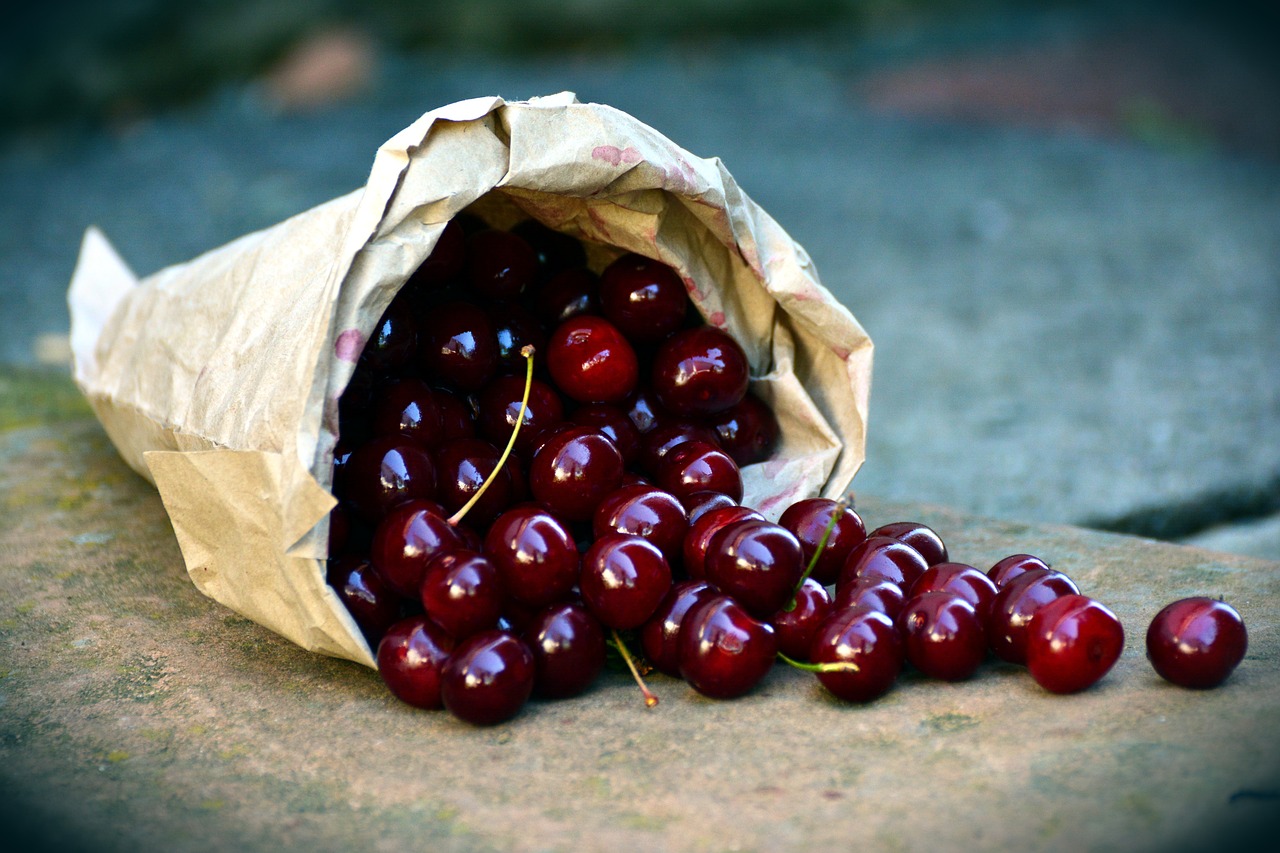Cherries, like most other commercially produced fruits, are grown in orchards that can be quite expensive to establish. The cherry bush or tree (Prunus avium) has specific climatic requirements and it takes a while for the farmer to see a return on investment (it takes up to five years for grafted trees to bear fruit). Cherry crops can also be fickle, not fruiting for a season due to the slightest difference in soil health, climate, or nutrient levels.
Some growers have noted that a tree can be “too healthy” in that it prioritises growth when it receives ample nutrients, instead of procreating and thus fruiting. Much like nuts, apples, oranges, and olives, cherry trees are alternate-bearing crops, meaning that they deliver high yields every alternative season.
You will also need to consider the possible capital expenditure for agricultural netting to protect cherries from sunburn as well as birds eating the crops.
After all that is said, cherries remain a well-priced, sought-after delicacy, mostly used in desserts, fruit salads, and speciality dishes. It can be very rewarding if done right. Here are a few pointers to keep in mind.

Source: Lisa Fotios on Pexels
Climatic and soil requirements
These fruits thrive in temperate climates with distinct seasons. They require a certain number of chilling hours (cold temperatures) in winter to produce fruit.
Cherries prefer well-drained soil with a slightly acidic to neutral pH (6 to 6,8). Soil should be rich in organic matter. Conduct soil tests to understand the composition and fertility of your soil.

Cherries ripening on a cherry tree. (Source: Pixabay)
Planting
Preparing the soil properly is crucial for the successful growth of cherry trees. Start by removing weeds and debris. Cherry trees do not like waterlogged soil. If your soil has drainage issues, consider planting cherries on raised beds or slopes. Adding organic matter such as compost can also improve drainage. Check and adjust pH where necessary.
You can choose cherry varieties that are suitable for your climate and soil type. An agronomist will we able to advice on the best variety to plant. Plant cherry trees during the dormant season, usually in late fall or early spring.
When it comes to establishing a cherry orchard, using saplings is the preferred and more practical method.
When you use saplings, you can choose specific cherry varieties that are known for their taste, size, disease resistance, and suitability to your local climate. This ensures consistency in the quality and characteristics of the fruit you will harvest.
Cherries grown from seeds do not necessarily retain the exact traits of the parent tree. They can exhibit significant variability in terms of fruit quality, size, taste, and even disease resistance. This inconsistency makes it unpredictable and unsuitable for commercial orchards.
Grafted trees start producing fruit earlier than those grown from seeds. It may take only a few years for grafted saplings to bear fruit.
Nurseries often produce saplings from disease-resistant rootstocks, enhancing the tree’s overall resistance to common cherry diseases.
Dig a hole twice as wide and just as deep as the root ball of the cherry tree. Break up the soil at the bottom and sides of the hole. This encourages the roots to spread easily. Gently spread out the roots of the cherry tree when planting. Avoid planting too deep; the tree should be at the same depth it was in the nursery.
Proper spacing between trees is crucial for good air circulation and sunlight exposure. Standard spacing for cherry trees is around 6 to 8 meters apart.
Water after planting.

Mature cherry trees are blossoming. (Source: Vecteezy)
Irrigation
Cherries need regular watering, especially during dry periods. The trees need approximately 1 300 m3 per hectare per season.
Drip irrigation is often the most efficient method, ensuring consistent moisture without waterlogging. Irrigation companies can provide you with advice on drip irrigation for your orchard.
Furthermore, mulching around the base of the trees can help to retain moisture and regulate soil temperature, making your orchard more water efficient.
Fertilisation
Based on soil test results, apply fertilisers containing nitrogen, phosphorus, and potassium as needed. Organic options like compost and manure can also enhance soil fertility. Additionally, Boron, Zinc, and Manganese can also be applied.
Annual composting can also benefit your trees.

Cherries are harvested once they are ripe. (Source: Pixabay)
Pest and disease control
Common pests to cherrie trees include aphids, fruit flies, and birds. Implement integrated pest management techniques such as natural predators, traps, and proper sanitation.
Cherry trees are susceptible to diseases like powdery mildew and brown rot. Proper sanitation, fungicides, and disease-resistant varieties can help manage these issues. Root phytophthora and bollworm are also common.
Sources:
(2020). Gardening Australia. 20 December. https://www.youtube.com/watch?v=y4KEU1tSmoI
Louw, M. (2023) How to grow cherries, Fruit Farming in South Africa. Available at: https://southafrica.co.za/how-to-grow-cherries.html
Voigt, F. (2019) Cherry production in South Africa: Status quo and new initiatives, International Society for Horticultural Science. Available at: https://www.ishs.org/ishs-article/1235_33









